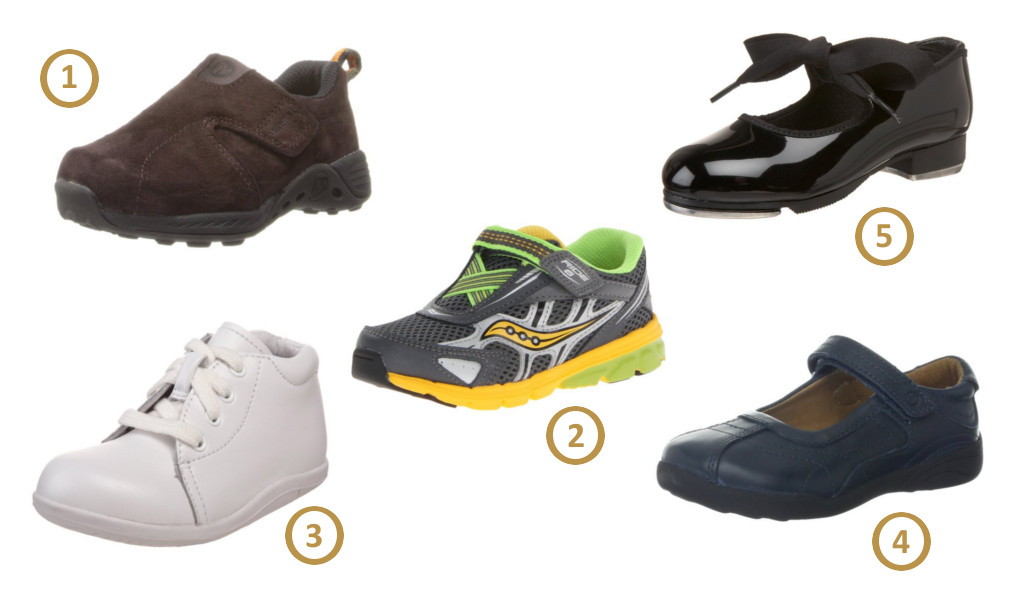Best shoes for babies learning to walk
For centuries babies crawled and walked barefoot and developed the feet naturally. There is not enough evidence to say that your new walker needs shoes in order to learn to walk. Let your child walk without any footwear as much as possible, but put on shoes while walking on slippery or dangerous floors, or outside when the feet may be damaged by rough or cold surfaces.
When searching for best shoes for our baby we saw there are shoes for 3 different stages available on the market:
Stage 1: Crawl
Crawling shoes. Your baby crawls a lot and probably even pulls himself up and walks around holding everything. The child is just starting to walk so if you choose to buy those shoes they need to be:
- Extremely flexible to mimic the natural foot
- As lightweight as possible
- Have plenty of width.
Socks with anti-slip grip are the best at this stage, but if you need footwear here are the best shoes for crawlers right now:
| Product | Price | Sole | Overall score |
|---|---|---|---|

|
$20.36 - $26.00 | synthetic | 4,4 |

|
$7.00 - $36.23 | rubber | 4,3 |

|
$4.99 - $9.95 | synthetic | 4,3 |
Some of the shoes for stage 1 have protective toe cups that will let the child glide with ease and prevent blisters from pushing with the toes. It is very important to have a very loose fit in shoes for infants learning to walk as bones and muscles need to develop and strengthen naturally.
Stage 2: Stand
Your baby is learning to stand. Muscles are strengthening by feeling the ground under the feet. Arches, heels and toes are starting to function. The shoes at this stage shall have:
- Thin soles that protect sensitive feet, but bend with the foot
- Lightweight lining for comfort
- Self-adjusting and loose fit
A pair of slip resistant skid socks is still the best option, but if your baby needs shoes here are some of the best on the market:
| Product | Price | Sole | Overall score |
|---|---|---|---|

|
$15.99 - $20.96 | leather | 4,4 |

|
Amazon | leather | 4,3 |

|
$21.66 - $45.00 | rubber | 4,3 |
Although it is better to let your baby stand barefoot it is not always possible due to cold or slippery floors. Slippery socks may do more harm than good as your child can’t balance yet and may fall. Choose shoes with seamless lining and lightweight soft soles for extra grip and warmth.
Stage 3: Walk
Your baby is starting to walk and may even start with running. This was at least the case with out toddler – he started with running from one corner of the room to the other and then learned to walk. It is easier to balance with higher speeds, thus the shoes for stage 3 should have:
- Anti-slip grip on the soles for good traction
- Thin soles so that your child learns to balance
- Wide self-adjusting fit so nothing comes in the way of the development of your child’s feet muscles.
The best shoes for early walkers and runners right now according to our research are:
| Product | Price | Overall score |
|---|---|---|

|
$36.90 - $67.65 |
4,7 |

|
$24.95 - $46.00 | 4,6 |

|
$8.94 - $32.99 | 4,4 |
The thread of the shoes for babies starting to walk should be thick enough on one hand so that it doesn’t hurt to walk on rough surfaces and flexible on the other hand as to not interfere with the baby’s developing walking abilities. If the sole is not flexible enough, then your child will trip and fall while learning to walk. That is why hard rigid bottom shoes are not good for babies.
Best flexible hard bottom walking shoes for babies are Stride Rite Artie Sneaker. The bottom is soft synthetic rubber that grips the ground when needed.
When to buy first shoes
Your baby do not need the shoes in order to learn to walk. Buy shoes if you need your baby to look gorgeous at special occasions. Let the baby crawl and walk barefoot as long as possible. The long-term effects of the footwear on the feet are not currently known. There are evidence that children walking barefoot has less occurrences of foot deformations later in life.
The baby’s first walking shoes should be bought when your child will be standing or walking on rough, cold and other potentially dangerous surfaces that can damage the foot (for example outside on asphalt, gravel or snow).
How to measure baby feet
There are several ways to measure the foot in infants:
- Download StrideRite measurement chart or make your own and outline both feet for correct sizing. Always measure while the kid is standing upright. Do it in the evening as the feet are a bit larger after walking all day.
- Buy a baby foot measurement tool that makes an online shoe shopping much easier. You measure your kid’s foot at home each time before ordering to make sure you get the right size. Remember, kid’s feet grow approximately 1 size every 4 months.
- Do it yourself with pencil and paper. Measure each time you order something for your kid.
